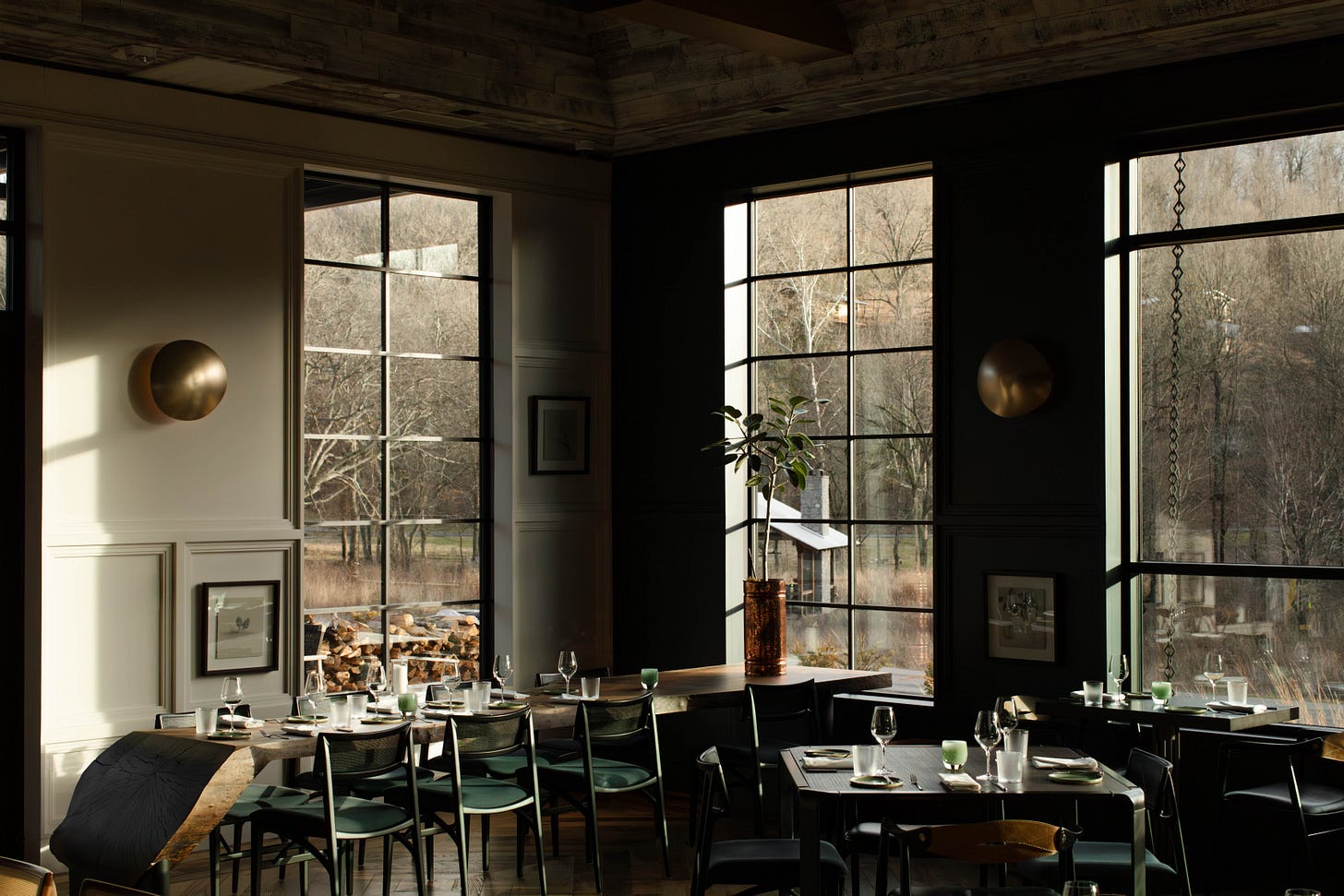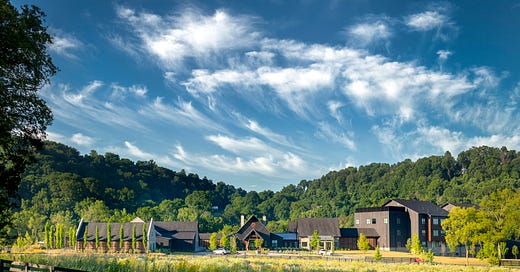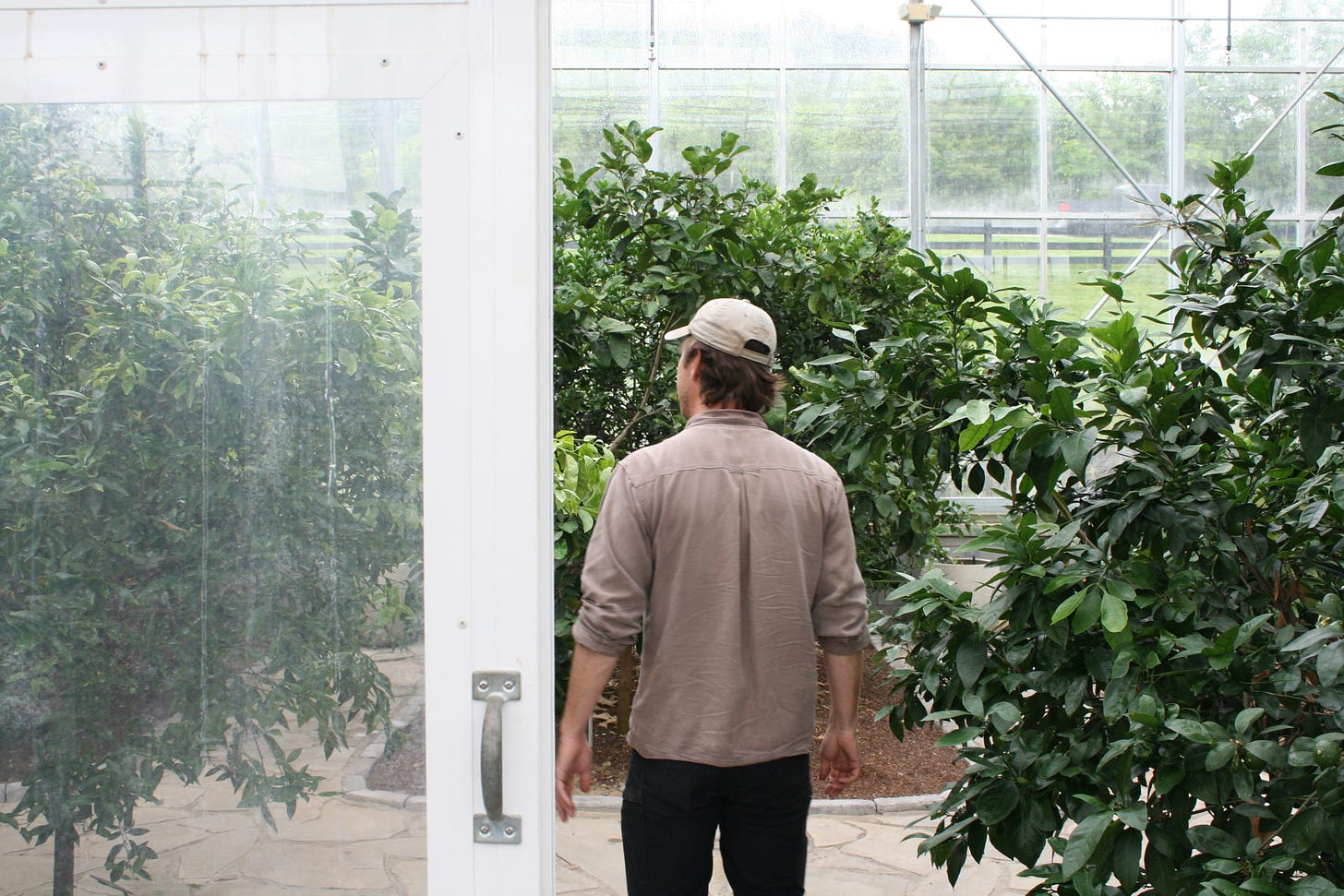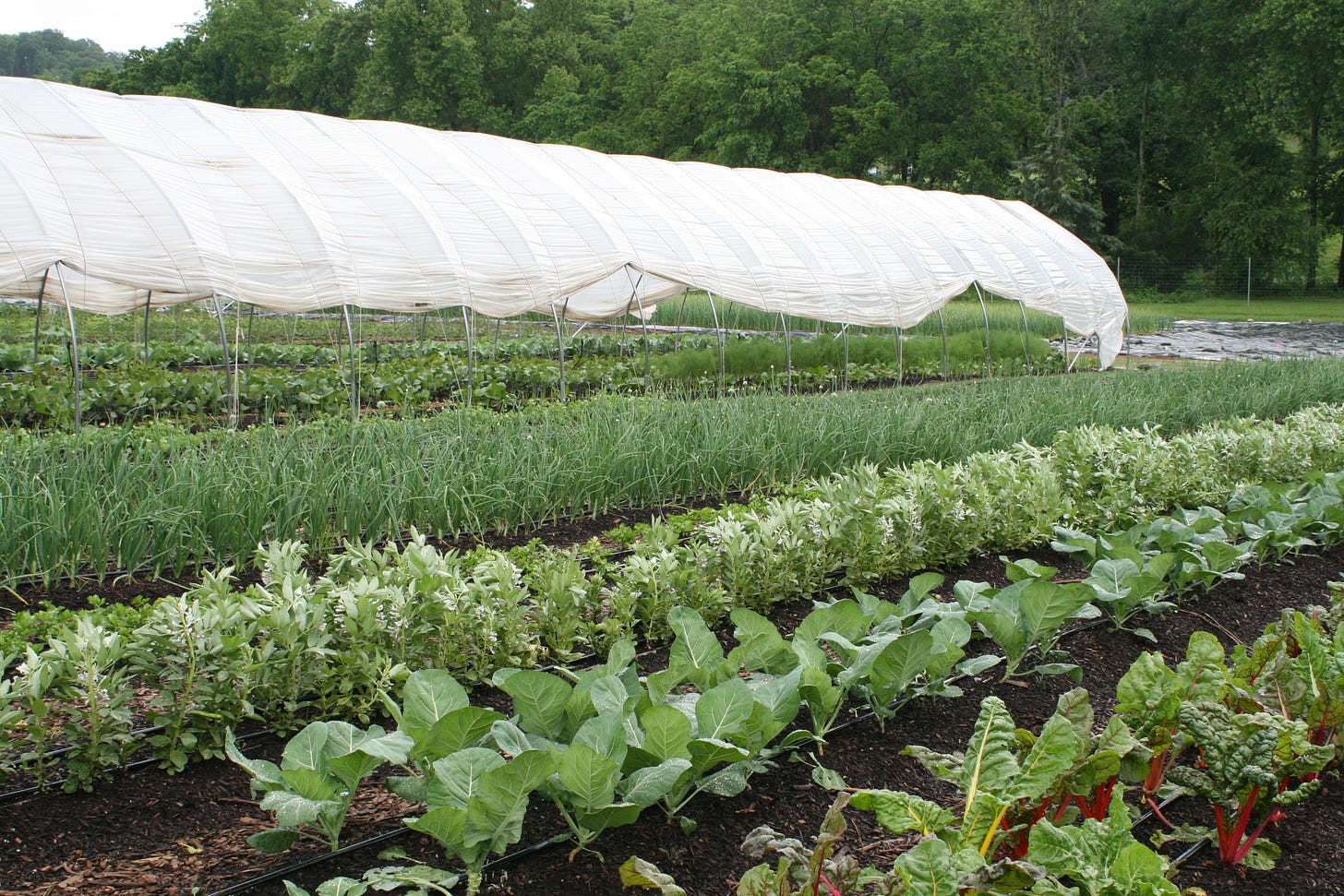Growing All the Veg at Southall Farm & Inn in Franklin, Tennessee
How they grow the produce for three restaurants & how I'll change my gardening after learning their methods
There is a curious middle ground between growing food at scale on a farm and growing for a home garden and your family. Southall Farm & Inn is in that sweet spot where they provide homegrown produce for three dining operations on the luxury farm resort, and yet are still able to observe regenerative practices, cater to the chef’s menus, and also put out a beautiful crop season after season.
I was so honored to get to walk around the property with their new Farm Manager, Alec Higgins, and hear more about the details of what they do and how they do it.
Who Southall is growing for
There are three places to get food (plus a speakeasy) at Southall: the Jammery, Sojourner, and January. They’re serving multi-course meals and inventive seasonal fare that is truly tasty. I’ve eaten there many times in the past two years and love seeing what they come up with. They grow everything from salad ingredients to cocktail garnishes to around 5,000 pounds of potatoes.
All of the plants at Southall are direct-sown from organic seeds with organic methods of control for pests. In fact, my jaw dropped when Alec explained how they plan out their fields for growing - it’s genius! It’s a lot of work to set up a more regenerative approach to gardening, but well worth it. This year at Southall they actually shifted things a bit and Alec explains why below - it makes such perfect sense.
How they plan out the gardens (take notes on this, seriously)
The biggest challenges in Tennessee are excessive heat and water. In observance of this, Southall reoriented their vegetable beds to run North/South versus East/West in their space so that water runoff can drain through as opposed to flood. This also allows for a great caterpillar tunnel system where they rotate the hoops and shade as plants progress and mature. Truly, brilliant. Basically, instead of a few very very very long horizontal rows of crops, they instead have dozens of shorter vertically aligned rows of crops that will fit in the caterpillar tunnels and allow for easier harvesting, tending, planting, and rotation.
In addition to the shade and crop rotation, Southall adds pollinator strips to the garden so that every eighth bed is designed for flowering and trapping bugs to create a habitat for them. This keeps the biodiversity close to the crops as opposed to at the fenceline and creates a fantastic trap plant strategy that helps with pollination.
What this looks like in practice is that four beds are planted at the same time, then four more timed a bit later, with that eighth bed set to flower. They can have successive growing and multiple plantings over the course of the year, hitting a bit of each season, including over-wintering. See what I mean about brilliant?!
Lastly, I loved seeing how they were using annuals instead of perennials to double-check that they liked the pollinator placement. Alex explained that once they know that they like the usage of the flowering plants, they’ll move into a perennial plan.
I LOVE this because it allows you as a grower to truly get to know your space while still stewarding it well. Some gardening plans need to be iterative, as opposed to made prematurely.
The soil plan
As many of us gardeners know, your plants are only as healthy as your soil. Southall is practicing a deep mulch, no-till system. So wise. Their pathways are bark mulch and the beds are thick compost. This creates a rich fungal network that requires (not that they would anyway) no spraying. There is effectively one year of staying on top of pulling weeds and then after that, the healthy soil does all the work.
I watched as Alec pulled a few weeds out that came up easily, showing the clarity of the deep compost beds. They looked to be about six inches deep and truly had minimal weeds. Additionally, Southall is interplanting which helps with all of the soil composition as well. They had green onions and bok choi growing, will harvest the bok choi next and plant tomatoes, leaving in the onions, which are great companions to both crops.

It’s amazing to see what a huge property does to utilize space, engage in collaboration between farmer and chef, and keep things manageable at quite a large scale. Guests coming to Southall are expecting spectacular food that’s grown on-site and organically, and that is exactly what they get.
Home gardener takeaways
What the home gardener can take from this beautiful property is how thoughtfulness with your space matters. Many folks assume that a big property means endless options, but once you consider the topography, climate, and orientation of your space, you’re left with some logical options that best use the land.
Age-old practices like using mulch pathways, deep compost, no-till, companion planting, and crop rotation continue to ring true even when feeding hundreds. There is no cheating the system when it comes to soil health and listening to the pace of nature.
To learn more about Southall, HERE is their website. They have apiaries, an orchard, a lake, and many fun public events too.
Did you know that I wrote a book this year?! Kitchen Garden Living is the resource you need for making growing your own vegetables a part of everyday life. It’s an Amazon bestseller and you can snag a copy anywhere books are sold, HERE.








Thank you for sharing!! Sometimes it feels daunting to want to grow as much of my food as possible. So it’s nice to read about what other people are doing on a larger scale but making it sustainable, organic and smartly planned out.